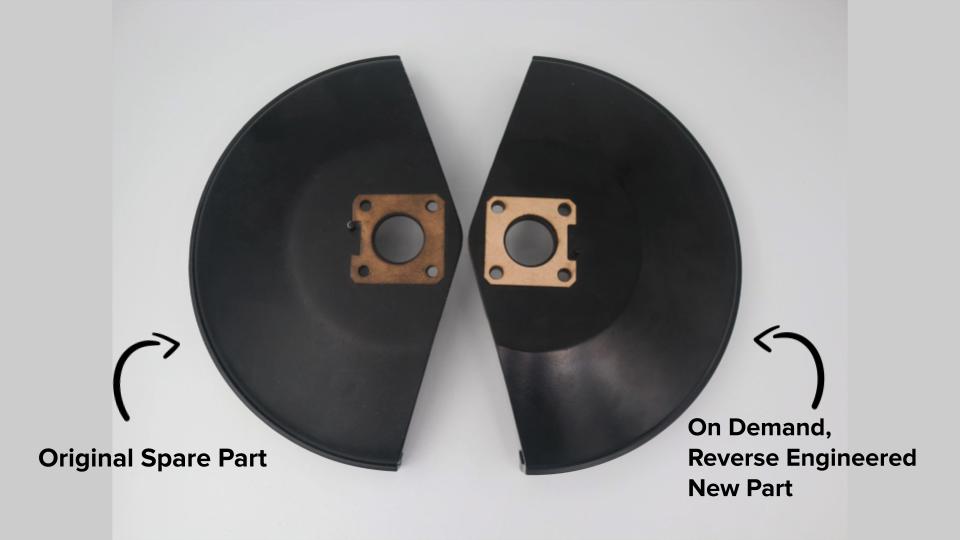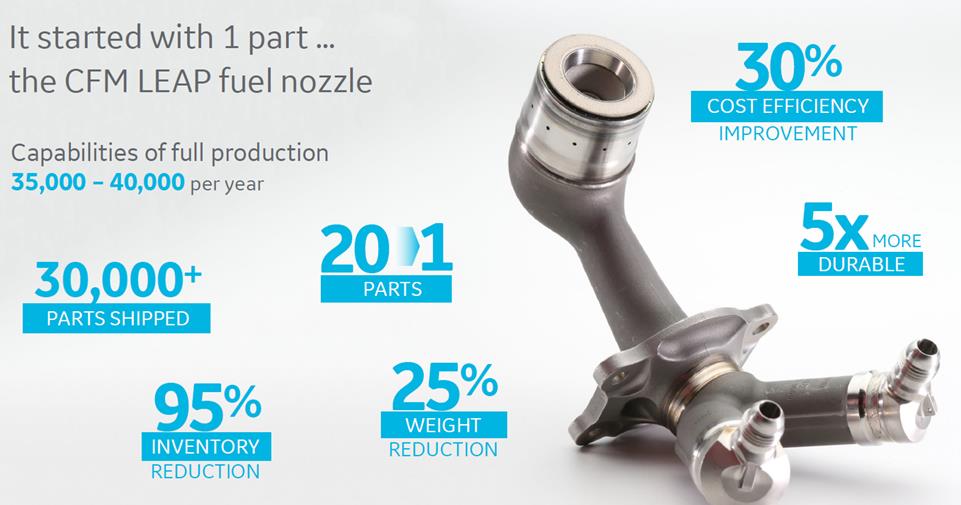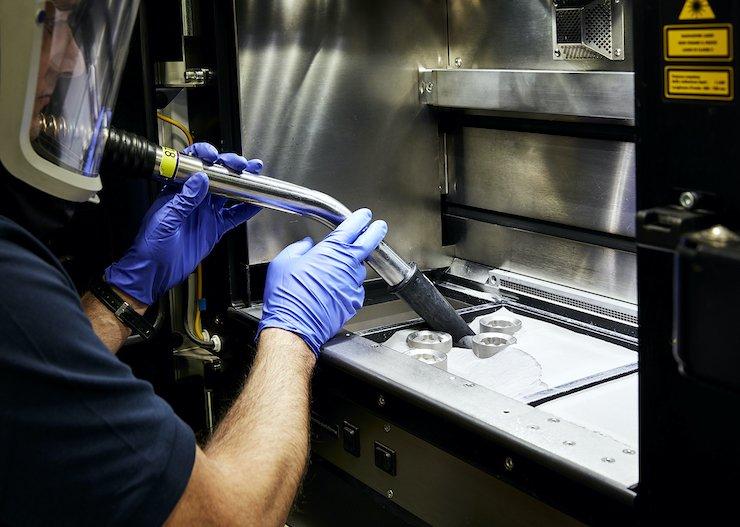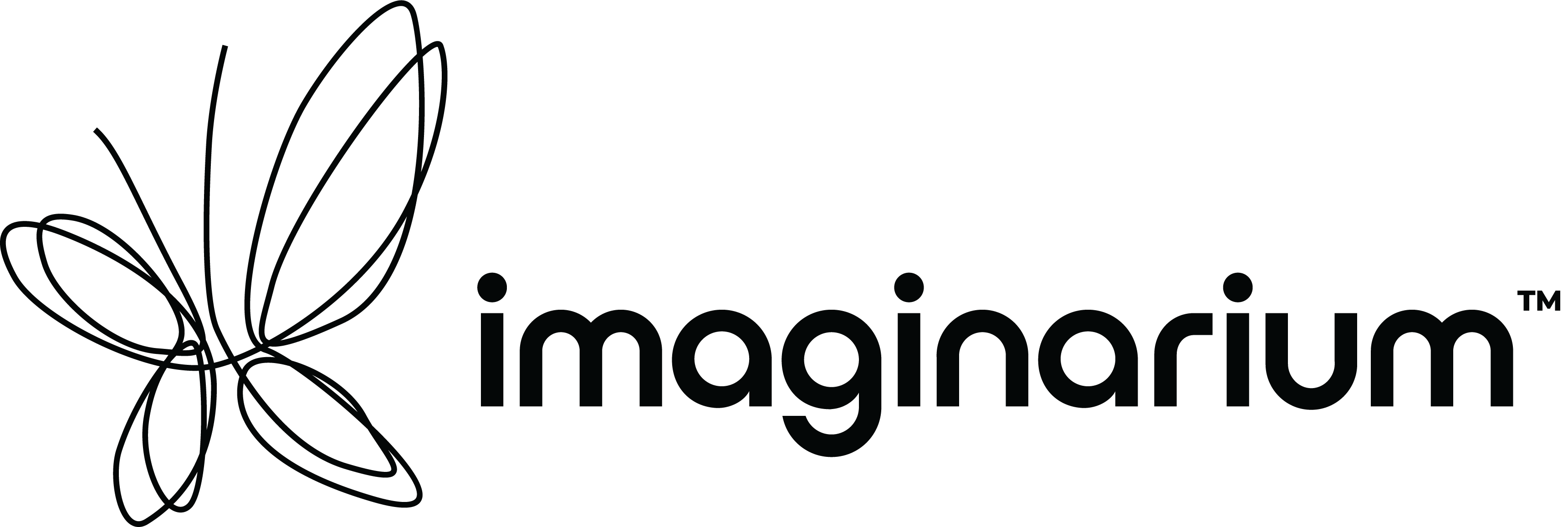3D Printing technology, a relatively new technology, has been rooted deep in the aircraft and the aerospace industry and now slowly the winds are changing as many industries are opening up to additive manufacturing. We see a revolutionary use of additive manufacturing technology in the petrochemicals, oil and gas industries. Experts believe that using 3D Printing in the oil and gas industry, oil and gas extraction would be more efficient, quick and cost-effective, which would naturally impact every aspect of the economy of any country. In an interview, David Eyton, British Petroleum Head of Technology, while speaking on the impact of 3D Printing in the oil industry, said, "3D printers are fantastic for making quite bespoke devices. The internals of our reactors are really quite bespoke. We can make anything now. The components can be produced quickly on-site or nearby as and when required, helping reduce waiting times when equipment is obsolete until replacement parts can be sourced from a manufacturer."
3D Printing & Different Market Segments of Oil and Gas Industry
In general, when one talks about the oil and gas industry, it is understood and often lumped into one identity - energy production. However, when one does a closer examination, one can find three different market segments of the oil and gas industry
● The Upstream Market - Also known as the exploration and production segment (E&P), the upstream market includes R&D of searching for hydrocarbon sources, drilling, bringing the reserves to the surface in the form of oil and natural gas and finally safely capping the wells, returning the geology to its natural state. Many companies use 3D Printing for Rapid Prototyping, on-demand manufacturing and alternative design in the R&D stage. The technology has proven to be a definitive solution for manufacturing parts for remote operations where spare parts would generally have to clear customs and might get delayed arrival in the field. With 3D Printing, one can manufacture parts even the metals ones on-site quickly and efficiently. Companies like GE have already started experimenting with the creation of complex new geometries. These can be applied within the gas turbines to increase the performance.
● The Midstream Market - This market segment is the one that serves as the conduit from the upstream to the downstream. It includes compressor and pumping stations, a system of pipes and transportation methods used to bring the hydrocarbons from the field to the processing centre. The hydrocarbons are then refined into consumer products. The most significant benefit of 3D Printing in the midstream segment is to manufacture replacement parts on-site. Oil and gas pipelines over long and complex geometries can lead to difficulty in repair and maintenance, specifically in remote areas or areas where the geopolitical climate is risky. Additionally, the issue of custom regulation for parts across international borders could be avoided as it can slow down an emergency repair to the point where the supply can be threatened, or there are chances of environmental disaster. Additive manufacturing has opened doors for innovation in the midstream segment of the oil and gas industry. There are thousands of miles of oil and gas pipelines stretching around the world and the structural integrity of each line is critical. Testing devices like pigs have been used for centuries to ensure these lines are working well. If there is an issue with the pig, one can easily 3D print a new one on-site using reverse engineering technology. 3D scanning technology has led to the introduction of smart pigs, a way to scan and then 3D print these legacy parts to measure the pig's displacement as it moves through the pipeline.

Picture Courtesy - Imaginarium
● The Downstream Market - This market segment includes several components on the consumer end of the supply chain like manufacturing, petrochemical refining, product distribution and retail. The most extensive area of opportunity for 3D Printing here is during the refining process. One can easily create single parts to replace a series of parts, thereby reducing cost, weight and stress points along with the assembly.
One can prototype or produce a wide array of parts in the oil and gas industry, including the Gas turbine nozzles, SSD sleeve, Sand control screens, Nozzles for downhole cleanout tool, Subsea chemical stick injection tool, Sealing accessories, Perforated pup joints, Liner hanger spikes, Drill bits, Investment casting patterns, Fluid/water flow analysis, Turbomachinery, Jigs and fixtures, Rotors, Stators, Mud motor modules, Flowmeter parts, Pressure gauge pieces, Control-valve components, Pump manifolds, Spare parts and more.

Picture Courtesy - GE Additive
Benefits of 3D Printing in the Oil & Gas Industry
The use of additive manufacturing (AM) in the oil and gas industry is gradually increasing. As a result, 3D Printing in energy, oil and gas has emerged as one of the major driving forces in industrial productivity. This industry has shown slow but steady adoption of 3D Printing owing to its various benefits.
● Short Lead times, Less Storage and Reduced Inventory with On-Demand Manufacturing
3D Printing shortens the lead time for sourcing parts and reduces the need for costly storage on rights and vessels. The digital files replace physical products that are needed to keep assets operational. It has been observed that vast sums of capital are usually tied up in inventory that may never be used and can become obsolete over time.
Let's say a mission-critical part is needed promptly in Brazil but stored in Norway. Here, you might want to invest in secondary storage in Brazil, but with additive manufacturing, all you need is the digital instructions for Printing so the part can be manufactured only on-demand in a nearby AM company in Brazil itself or directly to where it is required. Thus, one can cut lead times from months to days and avoid expensive operational downtimes. It can also prevent the costly retooling of manufacturing equipment to fulfil urgent orders and reduce the time and cost involved in sudden design changes or project cancellations. 3D Printing brings scalability, speed, customisation, and on-demand production options with minimal or no retooling, assisting the offshore and maritime industries to become leaner, more agile, and remain competitive.
● Unleash the Power of Reverse Engineering
One of the prominent reasons for using reverse engineering technology is to discover how a legacy part operates and its materials used. The original designs and material information of such old parts might not be available, or the original manufacturer might not be in business. Well-qualified technicians and metallurgists use a suite of analytical techniques to determine the metal components of the part, the alloys from which the part has been manufactured and how it can be re-designed to make the part more lightweight and efficient.
● Reduce Carbon Footprints
Additive Manufacturing can help the oil & gas, offshore and maritime industries decarbonise operations in the energy transition by distributing just-in-time production close to or exactly where the products are required. This reduces transportation needs and, in turn, lesser exhaust emissions, including greenhouse gases. It produces less waste than the traditional manufacturing methods, where the material is machined from a large piece of metal. 3D Printing only adds the needed material and co-locates it with the recycling of materials that can boost local and circular economies. A classic example could be turning used plastics and scrap metal into new feedstock powders and wires for additive manufacturing.
● Enables Technological Innovation
Additive Manufacturing supports innovation by enabling rapid iteration of physical objects during R&D. Designers, original equipment manufacturers (OEMs) and end-users can collaborate more efficiently from anywhere in the world by combining this technology for prototypes and end-use parts. 3D Printing has also proved to be a better option than traditional manufacturing methods for complex design than the conventional methods. In addition, it can enable novel repair methods like building up new layers of materials on eroded areas, extending the safe and efficient operation of ageing assets and reducing the lifestyle cost of equipment.
● Enables New Business Models
Some OEMs see Additive Manufacturing offering the potential to recapture the market share from non-OEM parts sold in grey markets where the distribution of 'real' parts is very lengthy. OEMs can supply digital files securely to selected local resellers equipped with AM capability to reproduce parts legally and safely. This would reduce the cost of parts and even boost availability.
● Design for Additive Manufacturing (DfAM) for Complex Geometric Designed Parts
Design for Additive Manufacturing (DfAM) is the key to unlocking Additive Manufacturing's potential in the oil and gas industry. Its methods attempt to work around various limitations like complex organic geometries, multi-part consolidation, mass customisation, lattice structures, functionally graded materials and more while staying true to the intended design goal.
Challenges Faced in the Use of 3D Printing in the Oil & Gas Industry
The bright advantages of 3D Printing technology can be achieved when the oil & gas industry can solve the numerous challenges faced by this technology.
● Part Identification
Not every part or component or material is suitable for Additive Manufacturing and therefore picking the right part is a combination of art and science which has a massive impact on the final outcome of the design activity. Our team of polymer scientists and metallurgists can help you identify the base material/equivalent to reverse engineer your part. We use methods like Positive Material Identification and Spectroscopy to identify the exact material used in the original part. It is, therefore, important to analyse every component of the product to screen and filter the most eligible part for the redesign.
● Legal & Regulatory Concerns
The transition of the stringent performance and safety standards set as per traditional manufacturing technologies to the 3D Printing technology can be difficult and could create friction.
● Simulation and Analysis
Most of the parts in the oil and gas industry are made up of metals. Metal 3D Printing can be expensive if not done right. It is essential to virtually simulate the production process and identify the points of failure. Simulation by experts can drastically reduce the number of test prints that can save precious time and money and even unwanted breakdowns of printers during the production process.
● Need for Specialist Knowledge
3D Printing is a relatively new technology undergoing a rapid research & development cycle; the scenario is turning a new page every day. This could create an entry barrier for companies that do not have an ideal knowledge partner to help them incorporate the technology into their manufacturing fold.

Picture Courtesy - Enrico Sacchetti & GE Additive
The Oil and Gas industry has shown a very slow but steady adoption of 3D Printing technology in the past few years. The technology primarily limited to polymer-based products has made numerous advancements in metal-based manufacturing, which is more relevant to the oil and gas industry. Baker Hughes was one of the earliest adopters of additive manufacturing technology and practices in the oil and gas industry after installing a direct metal laser melting machine back in 2013. The result was that the company could 3D print a new generation of parts, including a new natural gas turbine. Since then, the company expanded and added two more machines to practice additive manufacturing on a day-to-day basis. The company is also looking forward to developing a catalogue of spare parts with their improved capabilities as well as developing complex geometric parts like centrifugal pump impellers.
Global energy giant Shell also has been an early adopter of additive manufacturing technology. Shell uses 3D Printing to create parts across all sectors, specifically those usually labour intensive and expensive to manufacture. This has streamlined the manufacturing process and allowed the company to develop parts on-demand, thus reducing storage costs. ExxonMobil, Total and Woodside are some among the leading adopters. Additionally, several oil and gas solution providers such as GE Oil & Gas, Siemens Energy, Halliburton and more have also started incorporating 3D Printing applications for energy, oil and gas.
According to recent reports, 3D Printing in the oil and gas sector is expected to be worth $32 billion by 2025. Although 3D Printing accounts for just 0.1% of the global manufacturing market at present, increased adoption of the technology suggests that it could be worth as much as $60 billion by 2030. A report published by Protolabs states that around 83% of oil and gas companies are considering adopting 3D Printing to meet their spare parts needs. Several industries have already adopted 3D Printing and the energy sector is slowly opening up to this manufacturing process to supply vital components at the drop of a hat.
With over a decade of experience in additive manufacturing technology, our expert team at Imaginarium can help you with the latest project or production and assist you by providing a working solution for your needs. From the design to production, we would assist you and bring your designs to life. If you're looking for a manufacturing partner, a consultant, or an enterprise solution provider, then write to us hello@imaginarium.io and our experts would be happy to assist you.
